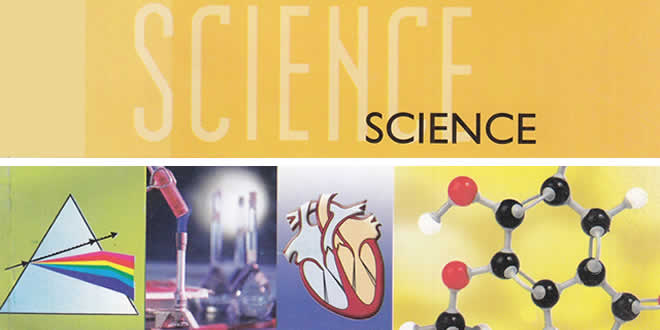How do Organisms Reproduce? MCQs: CBSE Class 10 Science Chapter 08 How do Organisms Reproduce? Multiple Choice Questions with Answers. MCQ Questions for Class 10 Science with answers was prepared based on latest exam pattern. Students can solve NCERT Class 10 Science How do Organisms Reproduce? multiple choice questions with answers to know their preparation level.
| Class: | 10th Class |
| Subject: | Science |
| Chapter: | Chapter 08: How do Organisms Reproduce? |
| MCQs: | 22 Questions |
| Quiz: | – Questions |
How do Organisms Reproduce? MCQs
Class 10 Science How do Organisms Reproduce? MCQs with Answers & Explanation:
Free PDF Download of CBSE Class 10 Science Chapter 08 How do Organisms Reproduce? Multiple Choice Questions with Answers. MCQ Questions for Class 10 Science with Answers was Prepared Based on Latest Exam Pattern. Students can solve NCERT Class 10 Science How do Organisms Reproduce? Multiple Choice Questions with Answers to know their preparation level.
Class 10 Science MCQs Chapter 08 How do Organisms Reproduce?
Question 1: During favorable conditions, Amoeba reproduces by
(a) multiple fission
(b) binary fission
(c) budding
(d) fragmentation
Answer 1.
Question 2: A feature of reproduction that is common to Amoeba, Yeast and Spirogyra is that
(a) they reproduce asexually
(b) they are all unicellular
(c) they reproduce only sexually
(d) they are all multicellular
Answer 2.
Question 3: The ability of a cell to divide into several cells during reproduction in Plasmodium is called
(a) budding
(b) multiple fission
(c) binary fission
(d) reduction division
Answer 3.
Question 4: Bryophyllum can be propagated vegetatively by the
(a) stem
(b) leaf
(c) root
(d) flower
Answer 4.
Question 5: Vegetative propagation refers to formation of new plants from
(a) stem, flowers and fruits
(b) stem, leaves and flowers
(c) stem, roots and flowers
(d) stem, roots and leaves
Answer 5.
Question 6: In a potato, vegetative propagation takes place by:
(a) root
(b) leaf
(c) stem tuber
(d) grafting
Answer 6.
Question 7: Vegetatively propagated plants
(a) do not bear roots
(b) do not bear buds
(c) are genetically similar
(d) are genetically dissimilar
Answer 7.
Question 8: Spirogyra reproduce by
(a) budding
(b) fragmentation
(c) regeneration
(d) fission
Answer 8.
Question 9: In Rhizopus, tubular thread like structures bearing sporangia at their tips are called
(a) filaments
(b) hyphae
(c) rhizoids
(d) roots
Answer 9.
Question 10: Plants like banana, rose, jasmine, orange have lost the capacity to produce
(a) seeds
(b) buds
(c) flower
(d) roots
Answer 10.
How do Organisms Reproduce? MCQs
Question 11: The flower of the Hibiscus plant is
(a) bisexual
(b) unisexual
(c) neuter
(d) very small
Answer 11.
Question 12: The part of the flower which is present in the centre of the flower is
(a) Sepals
(b) Petals
(c) Carpels
(d) Stamens
Answer 12.
Question 13: The seed that contains the future plant is called the
(a) cotyledons
(b) seed coat
(c) germ cells
(d) embryo
Answer 13.
Question 14: The period of pregnancy is called
(a) gestation period
(b) incubation period
(c) ovulation
(d) menstruation period
Answer 14.
Question 15: The process of release of eggs from the ovary is called
(a) menstruation
(b) reproduction
(c) insemination
(d) ovulation
Answer 15.
Question 16: The period during adolescence when the reproductive tissues begin to mature is called
(a) ovyfetion
(b) puberty
(c) germination
(d) propagation
Answer 16.
Question 17: In human beings, the fertilization occurs in the
(a) uterus
(b) ovaries
(c) fallopian tubes
(d) vagina
Answer 17.
Question 18: Along the path of the vas-deferens the secretions of which gland provide nutrition to the sperms?
(a) Prostate glands
(b) Seminal vesicles
(c) Scrotum
(d) Urinary bladder
Answer 18.
Question 19: The embryo in humans gets nutrition from the mother’s blood with the help of a special tissue called
(a) Placenta
(b) Villi
(c) Uterus
(d) Womb
Answer 19.
Question 20: Which among the following diseases is not sexually transmitted?
(a) Syphyllis
(b) Hepatitis
(c) HIV-AIDS
(d) Gonorrhea
Answer 20.
How do Organisms Reproduce? MCQs
Question 21: Which of the following method of contraception protects from acquiring sexually transmitted diseases?
(a) Surgery
(b) Condoms
(c) Copper-T
(d) Oral-pills
Answer 21.
Question 22: In human males, the testes lie in the scrotum, because it helps in the
(a) process of mating
(b) formation of sperms
(c) easy transfer of gametes
(d) secretion of estrogen
 Class Notes NCERT Solutions for CBSE Students
Class Notes NCERT Solutions for CBSE Students





